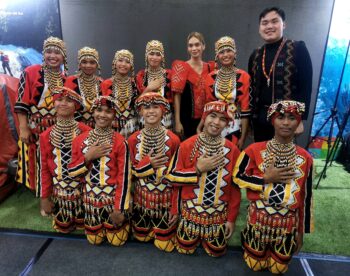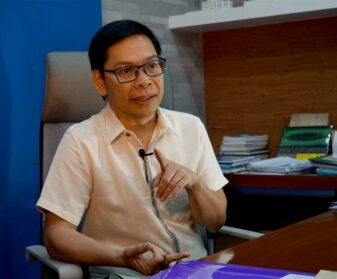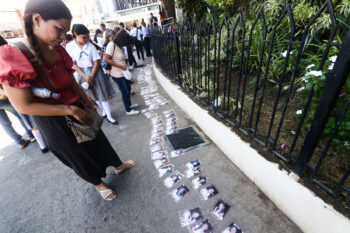Gus Miclat and Marc Batac
Initiatives for International Dialogue (IID) Global Partnership for the Prevention of Armed Conflict (GPPAC)]
The interest in discussing and addressing violent extremism (VE) and its prevention in recent weeks has reached some sort of a crescendo in this country due to the lingering Marawi siege; and in the region due to the debacle of the Rohingyas in Burma/Myanmar. It has become what we call the “flavor of the month.”
Here, the push for passing the Bangsamoro Basic Law (BBL) has taken on a different edge with a non-passage being bandied as a harbinger of a spike in VE among the Bangsamoro. Even some in the leadership of the Moro Islamic Liberation Front (MILF) have yielded to touting the BBL as a panacea for extremism just so the BBL may gain some traction or support in Congress and the body politic. While this may be tactically sound, there is danger that the real merit of the BBL will be shunted aside. That is the BBL in fact epitomizes the acme of the Bangsamoro struggle for self-determination; it aims to address the root causes of the Bangsamoro issue and is the result of their legitimate aspiration to correct the historical injustice imposed on them.
While we indeed need to talk about the immediate threat of VE, we, especially civil society, must not forget that it is the struggle for the self-determination of peoples that should remain current in our consciousness and in our work as peacebuilders and advocates.
And as we tackle the issue of VE, we must continue to talk about its causes; whether they are manifested in the behavior of those who practice it or in the ideology they espouse. We will talk about poverty, joblessness, alienation, marginalization, intolerance, injustice and disrespect as the main drivers of the VE phenomena.
We will also talk about how media—both mainstream and social—have become tools of propagating this virulent idea and attraction that has not only found resonance among young Muslim recruits but also in individuals, groups and armies like Anders Behring Breivik, the Caucasian Norwegian far-right terrorist who committed the 2011 Norway attacks killing 92 people by detonating a van bomb and who shot mostly young students in a summer camp; or the American Timothy McVeigh who in April 1995 exploded a truck bomb blasting a federal building in Oklahoma killing more than 168 people which was the worst terrorist attack on US soil before 9-11; or the Burmese Tatmadaw who have launched a virtual pogrom in Rakhine state in Myanmar against the Rohingya people killing hundreds and displacing more than 400 thousand people after elements from the Arakan Rohingya Salavation Army (ARSA) attacked and killed more than a dozen soldiers.
VE is not a new phenomenon
When we talk about VE, our minds have virtually been conditioned to picture Muslim terrorists such as ISIS, Daesh, Al Qaeda, Abu Sayaf or the Maute Group. While their methods and actions are indeed brutal and yes, terroristic, we tend to forget that terrorism is also employed by states or their agents who bomb, attack and occupy the lands of the Palestinian people; who indiscriminately carpet bomb cities and entire communities with drones or streaking warplanes in Syria, Iraq, Afghanistan or in the ramparts of the Pakistani borders. We may also want to remember the burning of Jolo in (1974), the Palimbang and Maimbong massacres in Mindanao and the wretchedness that martial law unleashed by the dictator Marcos in this country. We may want to ponder if the Marawi devastation and the thousands killed in the current war on drugs also fit the bill. And we can even go back deep into history and jog our memories about the pogrom that killed more than a million in the 60’s in Indonesia, the killing fields in Cambodia, the invasion and occupation of East Timor that cut that nation’s population by one-fourth, the Vietnam war, the Bud Daho and Balingaga massacres in Jolo and Samar, and even the so-called Indian wars against native Americans by European settlers, and the later civil wars in America and so forth.
Thus we need to be candid with each other that the understanding of violent extremism is contested and, still in many quarters, remain misunderstood and prone to confusion. When those who avow Islamic beliefs perpetrate VE, it is called terrorism. But if a white individual does it, he is called a crazed, evil or disturbed person, and if a state conducts it, is called national security or in pursuit of national interest.
There is a need to clarify our understanding of very disputed concepts. When we say that conflict analysis is critical, we do not mean this just in a rhetorical sense; we also mean this in very concrete terms.
To visualize, peacebuilding is to a huge extent similar to medical practice. Accurate diagnosis of a problem is the first step. Whether it is in the physiological sense or it is in conflict dynamics, it is critical to ensure that the interventions that we employ are not only effective, but will also not exacerbate an existing problem. Haphazard intervention, may it be in medical practice or peacebuilding, is not only dangerous for the patient or the affected communities, but more importantly, it is irresponsible and un-ethical.
In conflict analysis of violent extremism in particular, we should be able:
- To differentiate between conflict trends — i.e. while to a certain extent they are related, radicalization is different from fundamentalism, as these two are also different from violent extremism. Moreover, most importantly, terrorism is not synonymous with VE. Terrorism is a form of VE, but not all VE is terrorism.
- To insulate our analysis of these concepts from our pre-existing biases against these concepts — i.e. radicalization is neither essentially good nor bad.
- To be able to understand how these concepts are manifested in different contexts. To place all kinds of radicalization and all forms of violent extremisms in one basket is dangerous (i.e. the VE in the Middle East, Central Asia and Eastern Europe may be and IS different from the dominant VE trends we are facing in Southeast Asia; Syria is not Mindanao, Libya is not South Thailand; ISIS is not the same as the Rakhine’s ARSA and Burma’s KIA and various armed groups, Mindanao’s MILF and MNLF or even BIFF and ASG, and Patani’s BRN).
For some this seems to be a nitpicker’s undertaking, but to conflate and mix these concepts and these contexts with each other is the biggest mistake we can make as allies and advocates of peace.
Fundamentalism means, “changing from the roots”. While radicalization is a process of developing extremist ideologies and beliefs.
- Extreme – deviation from the norm.
- Norm – informal understandings that govern behavior of members of society
There was a time when the concepts of human rights, democracy, the calls for racial and gender equality and the right to self-determination of peoples, to name a few, were also a deviation from the “norm” of the times.
Violent extremism is an “action pathway” or as a process of engaging in violence.
While “radicalization” remains to be just in the area of idea/belief, “violent extremism” entails an “action”.
Moreover, “terrorism”, another controversial concept and trend, is just one form of VE; it is the use of intentionally indiscriminate violence to create terror/fear, in order to achieve a political/religious/ideological agenda.
But what is the link/overlap between radicalization and violent extremism?
Sociological and political science theories still do not have a consensus on this:
- One school of thought – Linear relationship between radicalization and VE: radical ideas and violent justifications lead to violent acts.
- Another school of thought – Non-linear relationship: that radicalization per se does not lead to the violence.
b.1. Not all those who have radical ideologies, take part in violent extremism.
b.2. Also, not all those who take part in VE, are radicalized due to an ideology or belief; in fact, some members of Al Qaeda/IS are not ideologues or deep believers in nuanced, extremist doctrine; recent analysis of the background of Americans and Europeans who partake in violent extremism do not show that they have a background of radical ideological doctrine.
b.3. Thus while there is a relationship between radicalization and VE; we should not jump into assuming the linear relationship between these two.
Conclusion
So how does the misplaced antagonism toward any belief that is perceived by mainstream culture and society as “deviant” and extreme”, and how does the conflation of the meanings of “radicalization” and “violent extremism” affect(s) civil society and peacebuilders’ work, such as the work that we do in the Initiatives for International Dialogue (IID), Mindanao Peaceweavers (MPW), All-Out Peace (AOP) or the Global Partnership for the Prevention of Armed Conflict (GPPAC)?
As peacebuilders engaged in Southeast Asia, we face some trends on VE:
- Most of the VE tendencies we encounter in the region (in the various ethnic states in Burma/Myanmar, in South Thailand, in Mindanao in the PH; before in Aceh and East Timor) are ethno-nationalist struggles in nature that is driven by the assertion of their right to self-determination. This is a distinct difference between the dominant VE in the Middle East/Central Asia/Eastern Europe, and the dominant VE in Southeast Asia.2. If we conflate VE as an “action pathway” and Radicalization as a process of transformation of “ideas/beliefs”, the danger is the intervention will be focused on the crackdown of perceived “radical” beliefs, which includes assertion of self-determination, rather than addressing the “action pathway”.
What does this mean?
- Focus on the process of transformation of “ideas/beliefs”, will lead to a mismatch in the solution/medicine and the problem/illness; it distracts us from the actual problem.b. Focus in the process of transformation of “ideas/beliefs” may lead to crackdown of perceived “radical” beliefs, i.e., crackdown of madrasas, and legitimate and peaceful expression of practice of cultures and beliefs, of self-determination; further discriminating against and radicalizing minorities communities and sectors in society.Hence, IID for one and our various members and partners in the GPPAC Southeast Asia network focus more in the intervention in the “action pathway” aspect, in addressing the push and pull factors towards “violence”. We do this by:
1. Campaigning for the opening up and strengthening spaces for people and civil society participation in peace processes and political dialogue:
– We call for the transformation of the paradigm of a “military solution” in addressing conflicts into the primacy of peace processes
– We call for a need to reform the security sector towards respecting International Humanitarian Law (IHL) and International Human Rights Law (IHRL), and the establishment of necessary regional and national mechanisms on transitional justice.
– We call for inclusive peace processes and political decision-making, especially the substantive participation of women and youth.
– We organize inter-faith, inter-ethnic and inter-generational dialogues, and
– We need to sustain our peace education efforts especially among the youth and return to a culture of peace approach.
- Capacitating local and affected communities to be able to be aware of and engage effectively the existing spaces for dialogue and political participation:
– We work towards communities’ greater understanding of human security, human rights, and other relevant conventions, norms and frameworks (such as the Sustainable Development Goals (SDG) and Responsibility to Protect (RtoP) as tools to prevent conflicts and impunity; and its capacity to monitor, adopt and advocate for human rights and other relevant norms and frameworks.
– We work towards better capacity of local communities to influence local, national, regional and international bodies, including the security sector, non-state actors, the Association of Southeast Asian Nations and its bodies and the United Nations bodies.
As a final message, we call for a fundamental change in how we perceive violent extremism and violent conflict. Rather than addressing manifestations of these, we should work to address the conditions that give rise to VE and violent conflict. We should ensure spaces and conditions for the respect for diversity, equality and peoples’ right to self-determination.
We call for a shift from reaction to prevention, from state-centered security towards human- and people-centered security.
GPPAC has developed 10 Human Security Guiding Practices for Countering Violent Extremism, which may be useful to consider, to wit:
- Human security guards the essential freedoms, safety, identity and human dignity of all people. It reflects the values in the preamble of the UN charter and encompasses development, humanitarianism, human rights, and security. It calls for holistic and context specific strategies to counter violent extremism.
- The ultimate goal and responsibility of any security policy, including counterterrorism policy, should be the preservation and protection of the freedoms, safety, identity, and dignity of individuals and their communities.
- Terrorism must be fought within the rule of law and with respect for human rights. Police and military functions must be distinguished and operate within the rules of national and international law.
- Military strategies to eradicate terrorism often harm innocent civilians. Such strategies must be amended to prioritize individual freedoms, safety, identity, and dignity.
- Militarized counterterrorism measures do not change radical ideologies. They often backfire, further radicalizing vulnerable populations, and should be used only as a last resort.
- Both victims of terrorism and counterterrorism measures should receive international recognition and reparations.
7.To effectively address terrorism, security policy must address root causes and focus on conflict prevention and transformation.
8.Civil society organizations are essential partners in countering violent extremism. Local civil society actors have valuable knowledge and relationships that are essential for transforming conflict.
- Restricting civil liberties and civil society space in the name of security creates the conditions of repression that fuel violent extremism.
- Listing practices have the unintended consequence of impeding peacebuilding and humanitarian access. Civil society must have legal and political space to engage with armed parties and the communities in which they operate.
As we in GPPAC and hopefully the rest of civil society endeavor to internalize and practice these principles, we call for a partnership and engagement between and among governments, multilaterals, civil society and even with non-state actors to prevent and transform conflict, build peace and justice and promote pluralism.
Not one player can do it alone.
[Presented at the Conference on Peace and the Prevention of Violent Extremism in Southeast Asia, Manila, September 23, 2017 by Gus Miclat and Marc Batac of the Initiatives for International Dialogue (IID) Global Partnership for the Prevention of Armed Conflict (GPPAC)]







